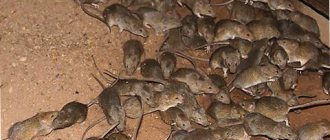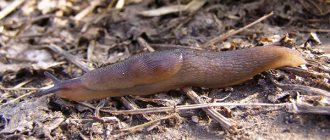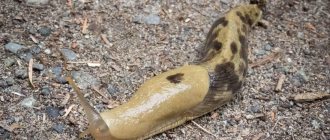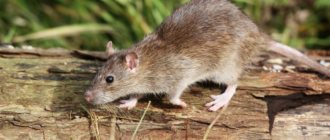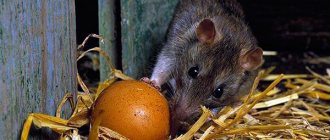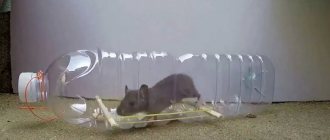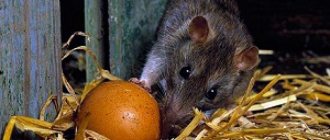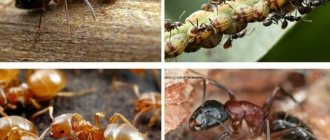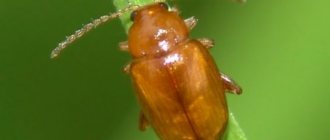Often unexpected guests appear in the country house or garden - pests. It can be quite problematic to remove them, and they create serious problems - they can eat sprouts, destroy root crops, and they can also move into your home.
Rats reproduce quite quickly, so the problem must be addressed immediately after detection. Small holes in the beds will indicate that this is where the dwelling is located. It can go about 35 cm deep. Getting the animals can be difficult.
How to get rid
There are various methods for eliminating such neighbors from the garden. The main thing is to remember that if there are pets or children walking on the site, then you need to protect them as much as possible from the influence of rodents. You can try to scare away rats or get rid of them altogether. Repellent methods:
- Pungent smell. Vishnevsky's ointment is diluted in a container with water and the ground where the animal's burrow is supposedly located is used. They cannot stand such a smell, so they can either change place or leave.
- Needles. Spruce needles scattered along the route of pests will help repel them for a while, since they touch their paws and injure them.
- Ash. You can also sprinkle paths with ash. It burns the animal's skin, so it will retreat.
Before moving on to methods of extermination, it is best to try to scare away the rats. The animals can go to a safe place and no longer cause trouble.
Features of the earth rat
This pest is an excellent swimmer, so it can easily move in any conditions in search of food. In the autumn, he moves closer to country houses and household plots, where he can find food for himself without much effort. The ground rat is distinguished by enviable fertility: the female gives birth to her own kind 5 times in 1 year, in quantities from 2 to 14 tiny living creatures. 2 years after birth, young water voles can already reproduce. Therefore, the difficulty of combating this pest also lies in fertility.
Given favorable conditions, the ground rat is capable of increasing its population to catastrophic proportions. In appearance, the earth rat is a fluffy and very attractive animal that belongs to the order of voles. This pest grows up to 25 centimeters in length, with the tail taking up half of its length. The animal weighs about half a kilogram and has a very variable color - from black to gray, with and without stripes of light colors.
The pest eats various root crops, tops, leaves, and also gnaws the bark of young trees. In addition, the water rat catches frogs, eats shellfish and hunts voles. In the summer, the rodent stays close to bodies of water, where there is enough food for them. Closer to winter, the pest moves closer to humans, settling in gardens or outbuildings. The water vole easily climbs trees in search of chicks and bird eggs.
The pest lives in hard-to-reach places, which are characterized by debris of old branches or unnecessary things. Among other things, the water vole builds pantries underground, where it stores food for future use. Therefore, its burrows represent many passages that are directed to pantries, to the nest, as well as to entry and exit points. She stores for the winter everything she has access to: potatoes, beets, carrots, grain, legumes, etc. The burrows are located at a depth of about 20 cm.
I
The most popular and effective way to get rid of any pests is poison. Poisoned baits are scattered in the habitats of pests, as well as in their burrow. Choose:
- "Difa-Neo" based on grain;
- “Difa” is a paraffin briquette.
6 ways to use old window frames in your country house
Description of the pest
Field rat in the garden.
The ground rat is actually a mouse, a water vole, which is actually a member of the hamster family. This mammal is called a rat because of its appearance. It is slightly larger than all its relatives, but smaller than the muskrat, the largest of them.
The water vole has a large body, a short muzzle and short legs. The tail can be 2/3 of the length of the rat’s entire body, the maximum size of which reaches 25 cm. The fur can differ in shades depending on the region and period, from brownish-gray to pure black. There is also a small amount of fur on the tail.
You can get to know the water vole better in this article.
Life activity
The ground rat has some qualities that you should be aware of. They damage lands and even agriculture on a large scale. Water voles reproduce quickly and are very fertile. They have 5 cubs in each offspring, and they give birth 2-3 times a year.
They are absolutely gluttonous . They eat almost everything they come across. These are small fish or shellfish, frogs or even chicks. They do not shy away from seeds and small root vegetables; they love bark and roots. On hungry days, they do not disdain even their small relatives, field mice.
Water voles are hyperactive . They are active both day and night. They are equally agile underground, in trees and in water. They can drag all the food that can be preserved into their pit to lie there during the hungry period.
Colonies and individual animals carry various diseases that can be dangerous for children and animals. They carry viruses and diseases, many dangerous diseases. Moreover, infection occurs directly through a bite, but also through feces and contaminated dust.
Pests, although active, are also cunning. For example, they get along well with moles. Earth rats love to use their passages and even steal supplies.
Rats get along with moles.
Precautions when dealing with rodents
Farmers know many preventative methods to prevent and keep rats out of the area used to raise poultry.
- One of them is the construction of a chicken coop on a monolithic foundation made of durable material, for example, concrete, with further laying of litter, which performs the function of insulation and has the property of adsorption of excess moisture. When using a room with supports in the construction of a chicken coop, it is recommended to install metal sheets around the perimeter of the structure, dug to a depth of up to 30 cm.
- When using a chemical method of pest control, it is necessary to place the poison in closed boxes with through holes allowing for the passage of rats. The disadvantage of this method is the high probability of the death of the animal being prolonged over time, as a result of which there is a danger of poisoning of pets and chickens. When using this method, it is necessary to periodically inspect the chicken coop for the presence of corpses of dead pests.
- It is not recommended to release captured rodents outside the site, given the high probability of their return. It is best to either give the prey to the cat, or put the animal in a special cage.
The likelihood of rats and mice appearing in a chicken coop can be reduced by following sanitary and hygienic standards, periodically monitoring the quality of food and its protection from potential rat infestations.
Rats and mice cause enormous damage when entering the area where the bird is kept. There are many ways to remove rats from a chicken coop, the most effective of which is the use of comprehensive protection, including the use of several methods of rodent control. However, when choosing their combination, you should study the possible negative consequences for poultry and pets.
Folk recipes
Earth rats do not tolerate proximity to chamomile.
Folk recipes for exterminating rats are considered less effective, but safer for family members, pets and crops. The most effective include the following:
- Growing plants. The roots of black elderberry release cyanide into the soil, poisoning rats, coniferous plants with needles injure them, burdock sticks to the skin and interferes. It is also worth planting plants that have an unpleasant odor for pests: garlic, mint, hazel grouse, tansy, wormwood, chamomile, juniper;
- Smoking. You will need to burn mint, wormwood or old rubber before entering the holes. The latter can be left for several days after burning. A sharp, unpleasant stench will force mice to run away.
- Use of gasoline and kerosene. It is necessary to wet pieces of rags and place them in front of the holes; you can also pour a glass of fuel inside. They note that the method gives almost instant results, but it must be used carefully, since gasoline spoils the soil and groundwater.
Humane means
Successful fight against earth rats can also be carried out using methods that are more gentle for the animals and do not involve their physical destruction. These methods are based on forcing rats to leave their favorite places.
Modern methods include the use of high-frequency sound vibrations. Ultrasonic repellers come in two types: some are effective in open spaces and indoors, and the second are aimed against rodents living underground.
By spreading ultrasonic vibrations directly into the ground, they repel earth rats. The advantage of this method is its ease of use. The disadvantage is the relative high cost.
Preventive measures
The following preventive measures will help prevent the appearance of earth rats on the site:
- timely weeding, removal of plant debris (fallen leaves, rotten fruits, dead wood);
- keeping the area clean (there should be no garbage or food waste);
- deep digging of beds and row spacing in the fall after harvesting;
- regular inspection of the area for the presence of burrows;
- the compost pit should be equipped in the far corner of the site, away from the beds.
When harvesting, it is very important to check that there are no root crops left in the ground, and that there are no remains of herbs and vegetables in the beds. A cat or dog periodically walking around the area will also help protect against rodents.
